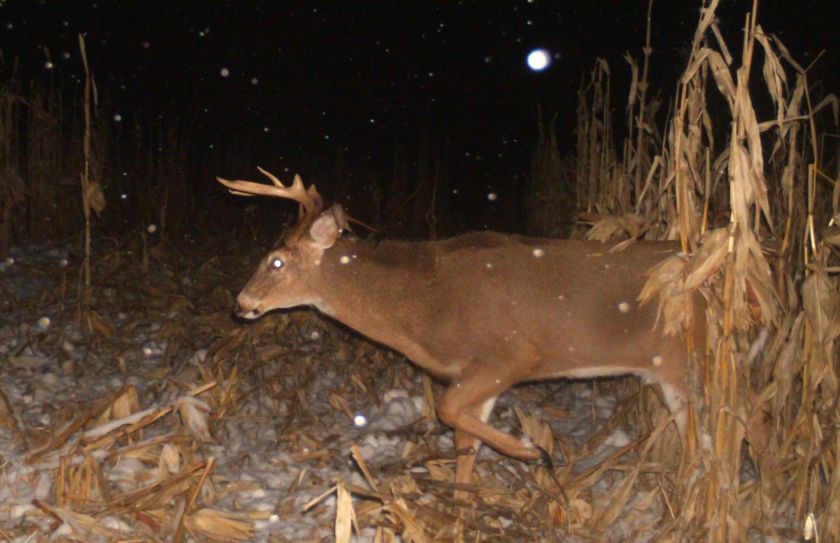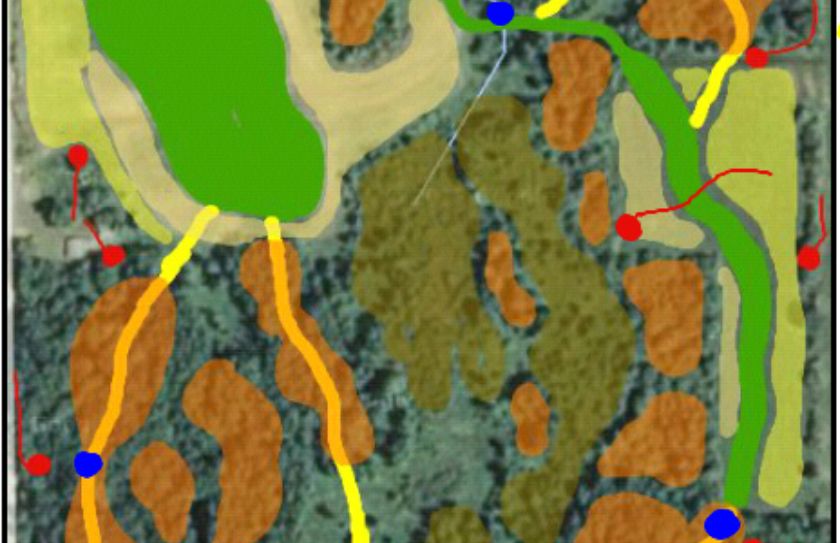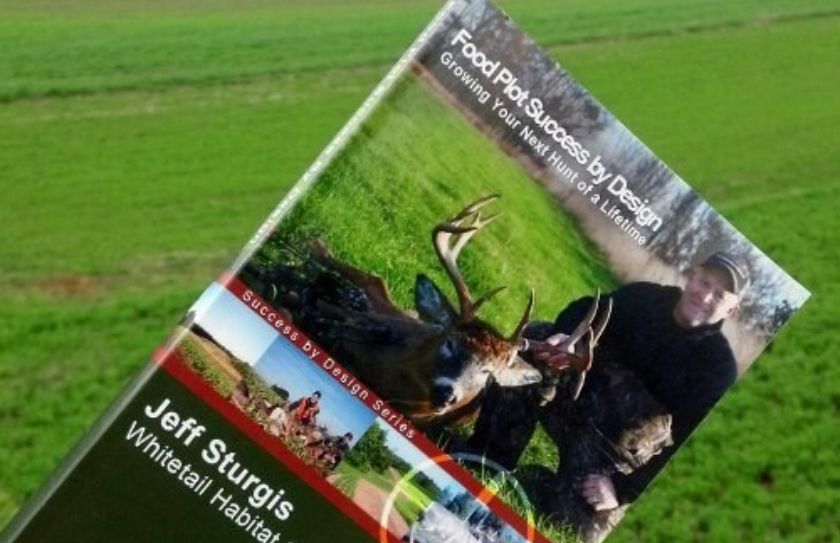*Do you have enough depth of cover on your land? Depth of cover refers to the amount of space left over, outside of food, that you can expect to house does, then immature bucks and finally if enough space is left over - mature bucks. Depth of cover is critical, because if your food plot strategy is not effective enough, you can have little or no room left over for mature bucks.
You can't afford to miss this critical food plot strategy, if your desire is to create a habitat for mature bucks on small parcels. Believe it or not, often the more attractive a food plot is, the greater the potential for that plot to actually displace mature buck bedding opportunities on your land. Let's face it, the older a buck gets, the more reclusive he becomes. What that means in terms of the food plots that you plant, is that the greater amount of attraction the food plot is, the greater the distance that a mature buck will bed during the daytime, from that food source. This is a concept that I experienced, recognized and named about a decade ago, called "Depth of Cover".
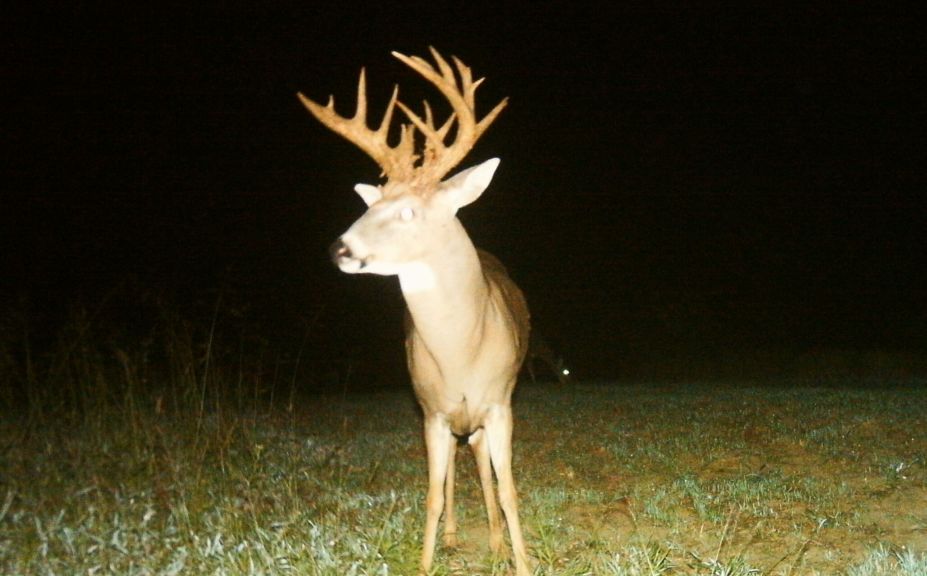
Depth of Cover for Mature Bucks
Unlike doe family groups as a buck ages, he will tolerate less and less social stress, created by does, fawns and immature bucks. It is entirely possible to create a parcel that is only attractive during the hours of daylight, to every deer but mature bucks. Where food is located on the lands that you hunt, specifically dictates where a buck will feel secure during his daytime bedding hours. In a nutshell, significant food sources dictate a particular distance that a mature buck will feel safe bedding away from that food source, during the day. If deer in general are accustomed to more space as in the case of most wilderness or high cover settings, that distance can increase to distance of a mile or more. In low cover ag settings where less than 5% of the available habitat is in the form of cover, a mature buck may be forced to bed within 100 yards or less from his preferred afternoon food source. In the end, it is critical that you locate the food sources on your land, in locations that allow you to tap into the preferred depth of cover needed for your region, to actually have a chance to hold mature bucks during the daytime hours. If your potential depth of cover is deminished on your parcel due to poorly located food sources, you can expect to create a daytime habitat consisting of females and youngsters at best and at worse, a parcel that is completely nocturnal to the local deer herd.
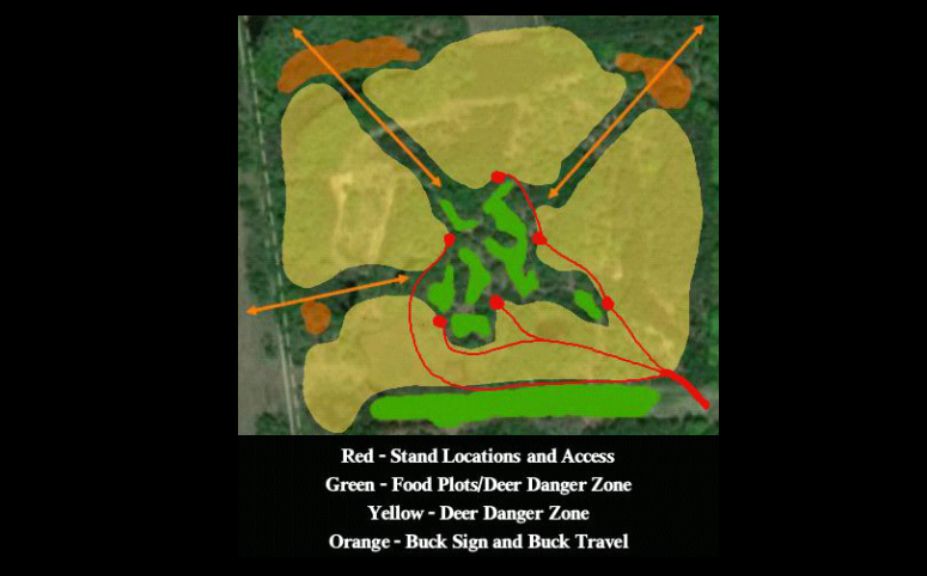
Poor Food Plot Depth of Cover
The 40 acre parcel above, is an example of extremely poor depth of cover ratios. When poor depth of cover is combined with invasive hunter access, excessive food plot hunting and a scent control program that effectively forces deer to the outside (or off) the land in every direction, any level of appreciable hunting and herd management success is doomed before it even begins. Simply in the design below, there is no room leftover for mature bucks due to the food plot program, and the stand locations and access routes combine to create a parcel that is nearly completely nocturnal. The landowner is forced to wait during the evening hours for the deer herd to return from neighboring lands, and the chances are extremely low that a mature buck will ever arrive during shooting hours. The entire parcel then becomes high risk and high stress habitat to the local deer herd, and the landowner is actually worse off than when they began. The only significant amount of buck sign will be found around the parcel borders, where mature bucks stage during midnight hourse before entering the land.
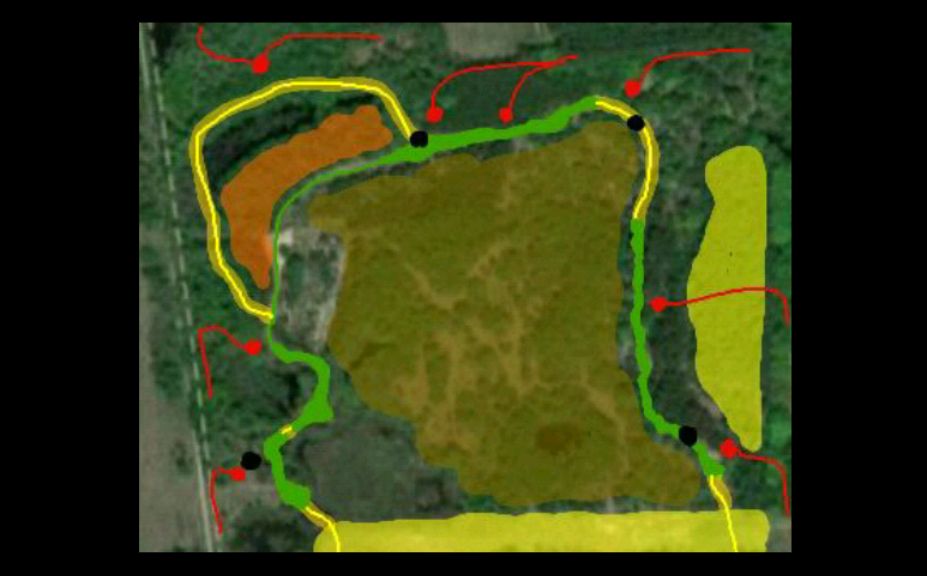
Adequate Food Plot Depth To Attract Mature Bucks
In the case of this parcel, moving food to the outside, can flip the depth of cover ratios and use of the local deer herd, to a hidden interior daily movement pattern. By converting the southern food source to switchgrass as well as the harvested pine grove alone the eastern edge, the parcel is even further protected from the outside. Long, lengthy food plots create an even greater depth by placing doe family group bedding in a linear fashion, allowing bucks to bed more closely on the interior of the land. While keeping hunter movements to the outside of the land as opposed to the inside, the landowner can expect to hunt a core portion of his habitat, where unsuspecting deer rarely see, hear or smell a human. By converting the food to cover in the core of the land, managing hunter intrusion levels to protect the core, the parcel's previous weakness can now become it's strength.
While this example is of an exterior improvement food plot program, the same applies for food plot systems that are located to one or two sides, or to parcels that are fragemented by deer-less habitat or human features such as lakes, rivers, houses or horse pastures.
Conclusion
I can not understate how critical this food plot concept is for your overall herd and hunting success, let alone for your mature buck success. On average parcels with average cover percentages, you can expect a mature buck to bed at least 150 yards away from a significant food plot of a 1/2 acre or more in size, if adequate doe bedding and sufficient levels of daytime bedding cover exists and hunter intrusion levels are eliminated. What that means is that when you consider hunter access routes and stand locations, a 5 acre food plot in the middle of a 40 acre parcel, effectively pushes away any chance of potential mature buck bedding. Having enough depth of cover may just be the most critical food plot strategy for creating quality deer herds, that you can employ on your land.
